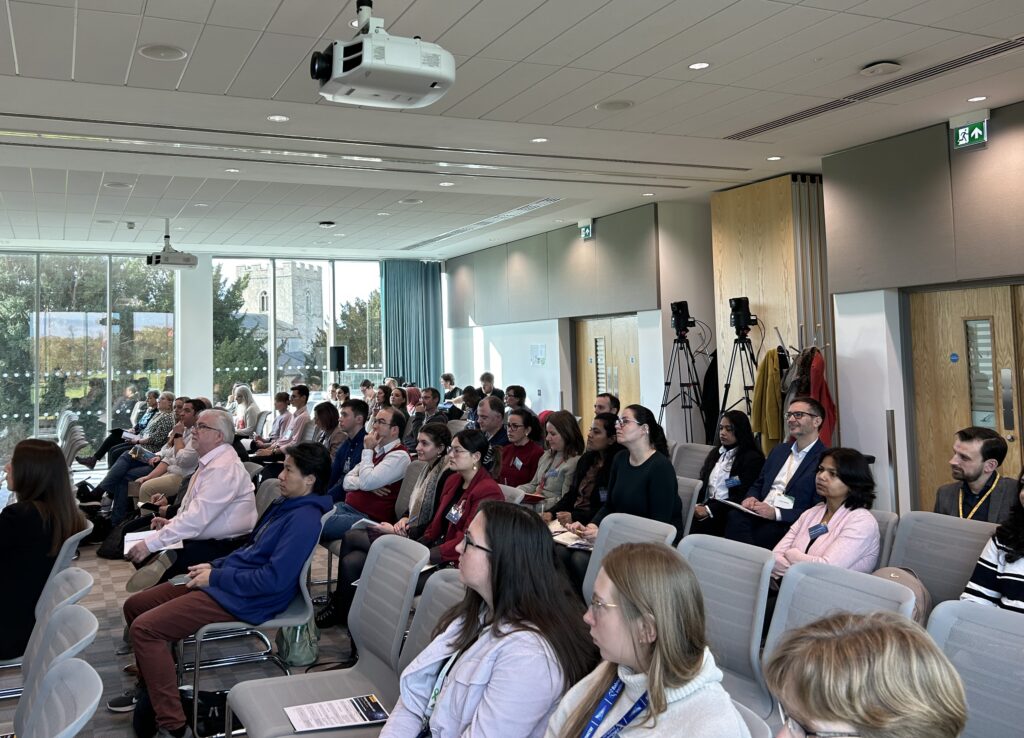
On Thursday November 9th, 2023, Promega held its 7th Biologics Symposium at the Babraham Research Campus in Cambridge. For the first time, participants had the option to attend the event either in person or experience it via live stream, creating an inclusive and dynamic environment where the latest breakthroughs and ideas could be showcased. Moreover, the event was organized into a morning and afternoon session, enabling ample time for networking and the exchange of ideas beyond formal presentations.
Morning Biologics Symposium Talks
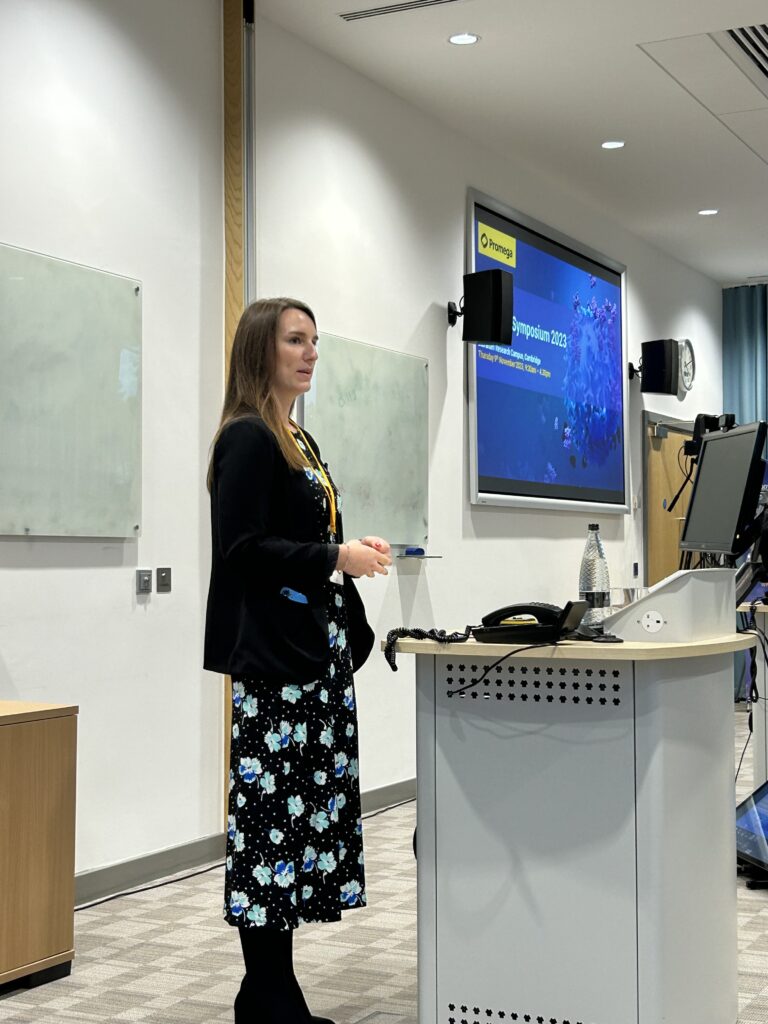
Leanne Wickens, Senior Product Manager at Promega and this year’s symposium moderator, opened the event by highlighting the role of Promega as an innovator and collaborative partner in the biologics field. Wickens emphasized, “Just over 30 years ago Promega released our first luciferase assay products, which started a program of innovation and development that now includes a wide assortment of bioluminescent assays, including of course our biologics portfolio.” This introduction laid the groundwork for the research perspectives and discoveries and provided an excellent introduction for the first speaker Jamison Grailer, Research Scientist at Promega Corporation.
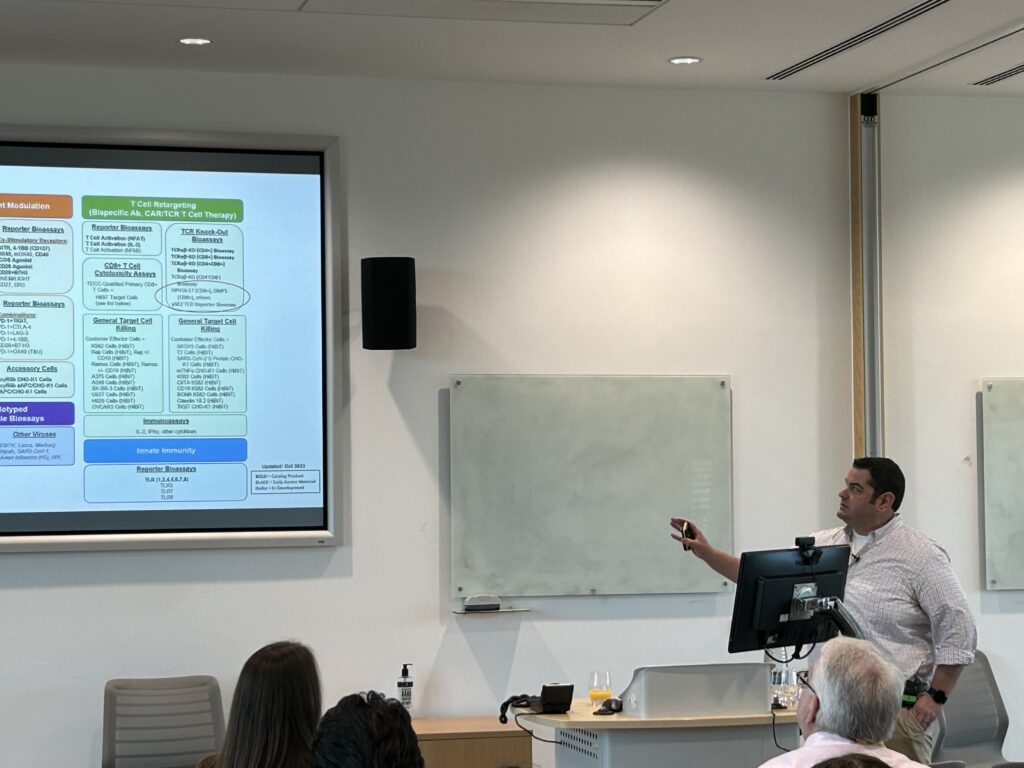
Grailer discussed how the SARS-CoV-2 pandemic led Promega to investigate tools for vaccine research, and how their interest in vaccine potency testing spawned a renewed focus on the three R’s – a strategy focused on the reduction of animal usage in research. According to Grailer, the major goal of their research “was to generate a proof-of-concept in vitro vaccine bioactivity assay using engineered cell lines.” By producing TCR reporter cell lines, Promega could attempt to generate cell lines with specific T-cell receptors that could act as a sensitive antigen detection system, that provided quantitative data of traditional biochemical assays, while maintaining the physiological relevance of an animal model.
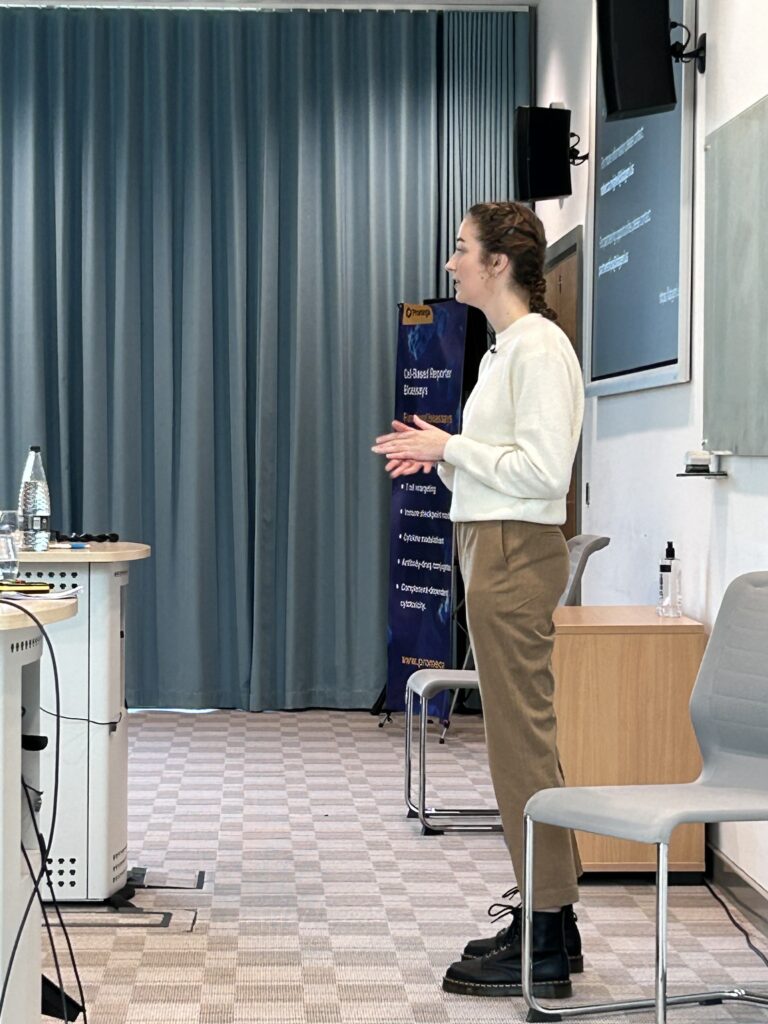
This T-cell centered presentation rolled nicely into that of the second speaker, Rebecca Mighell, a Scientist at LabGenius, who discussed how their lab’s “combination of human and machine intelligence can accelerate the discovery of uniquely powerful antibodies.” Her presentation showed how the LabGenius platform can simultaneously co-optimize multiple antibody properties and how the platform utilizes the HTP T-cell activation assay to produce ML-grade data for 480 compounds per assay across two cell lines. Notably, Mighell also spotlighted the development of a T-cell activation assay for the discovery of tumor-selective HER2×CD3 TCEs and the adaptation of the assay for other projects with different targets: “highlighting its adaptability and robustness.”
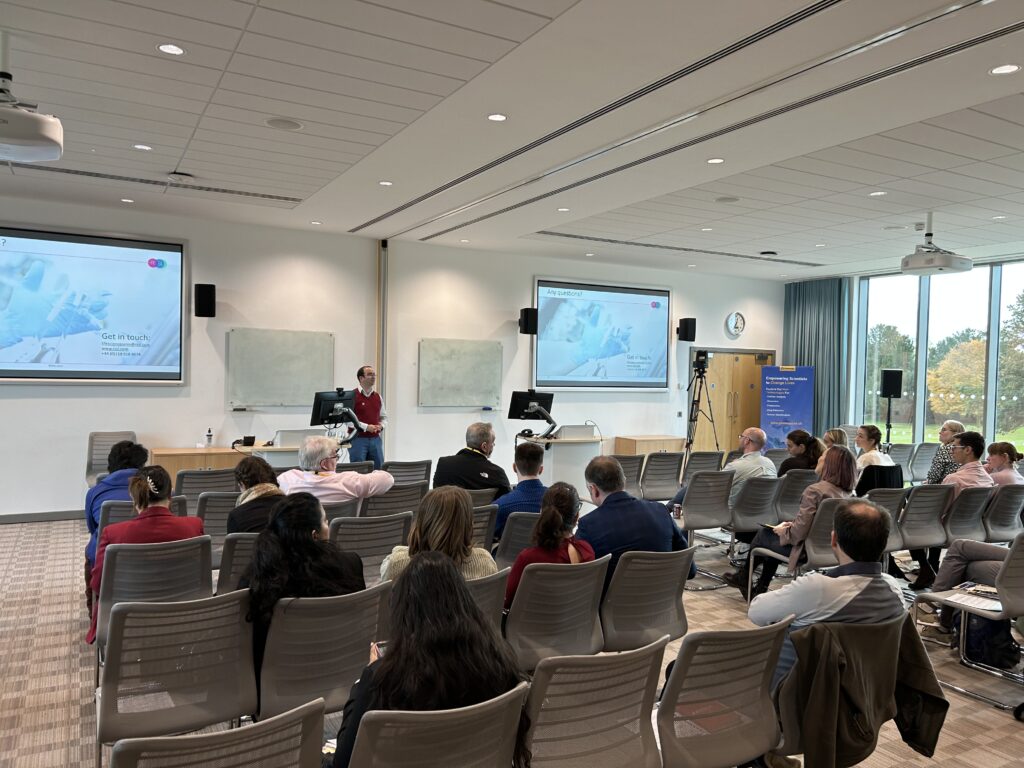
The third presenter at this year’s symposium was Alistair Michel, a Senior Scientist at Reading Scientific Services Ltd, who discussed the use of a Promega custom T-cell line to create an early phase qualified GMP assay. Michel provided a solid framework for his talk, discussing his company’s involvement in all stages of the developmental process and highlighting upcoming regulatory changes in the field. To highlight the impact of these changes, Michael went on to discuss a project from their company in which, “as part of the scope we were tasked with developing a mode of action T-cell activity assay to demonstrate that the vaccine could activate the T-cell with a specific receptor to the HPV E7 11-19 epitope”, discussing their proactive approach in addressing these forthcoming regulatory modifications.
Afternoon Biologics Symposium Talks
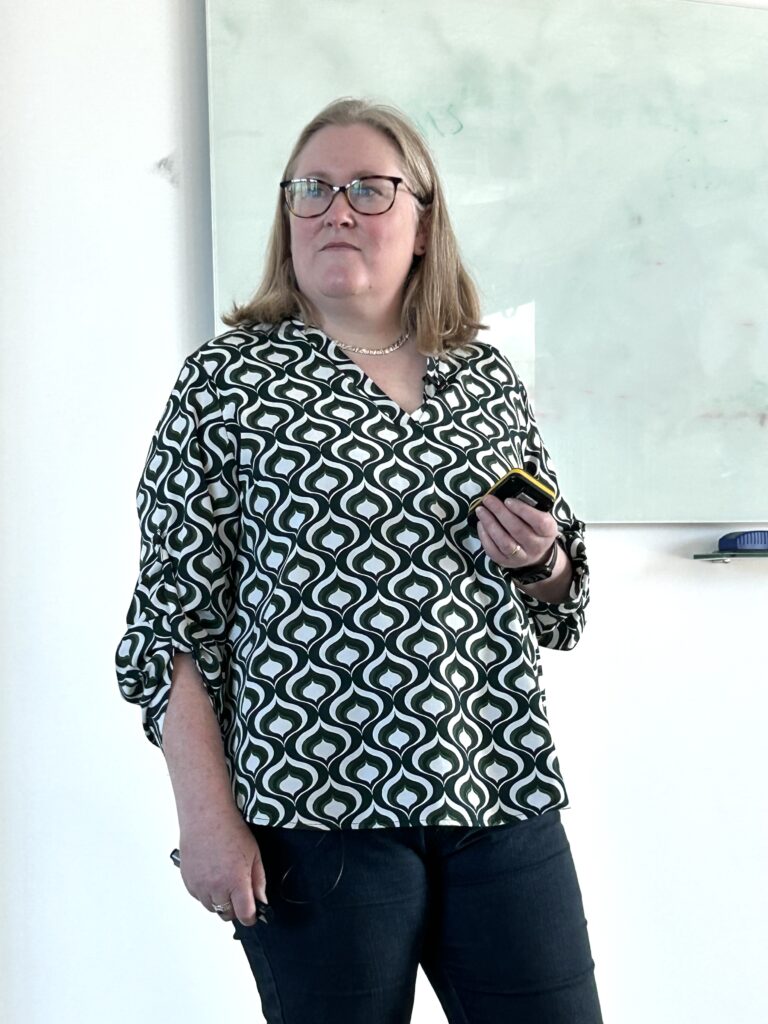
In the afternoon session, Patricia Lalor, Professor in Experimental Hepatology at Birmingham University, took the floor as the first speaker. She began with a distinct shift in focus from the morning’s discussions stating, “Rather than thinking about some of the beautiful assays, well validated assays that we have heard about this morning, I am going to move slightly to the downstream consequences. Once you have your lead antibody and put it in a person, what happens?” Her presentation focused on types of antibody therapies, key cell types in the liver and how they change with disease, the role of liver in clearance of antibodies, and impacts of liver disease on receptor-mediated clearance.
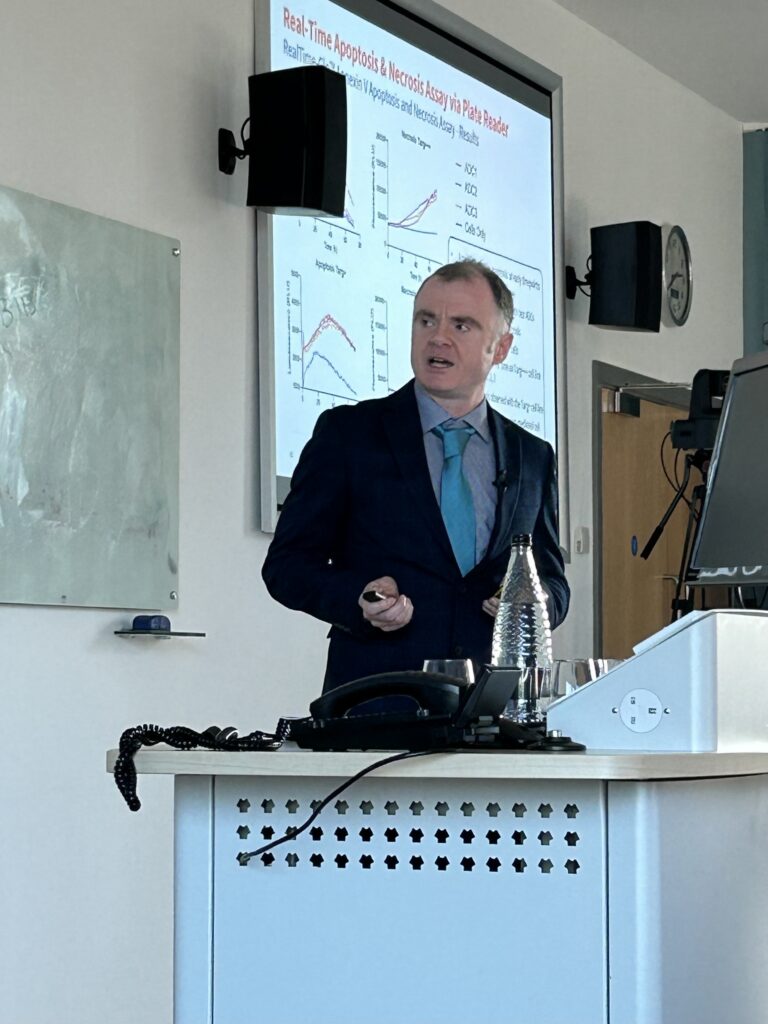
This discussion on the implications for design of biological therapies in relation to the liver made a great transition into the fifth speaker Grant Harradence, Manager at Abzena, and his presentation on ‘Selecting Stage Appropriate, MoA-reflective Cytotoxicity Assays for ADCs and Biologics’. During his talk he demonstrated an assay-specific approach on each of the different stages of the discovery process: discovery & lead selection, lead optimization and characterization, and potency assays, with each section of the talk presenting different case studies to rationalize the choice of assay made.
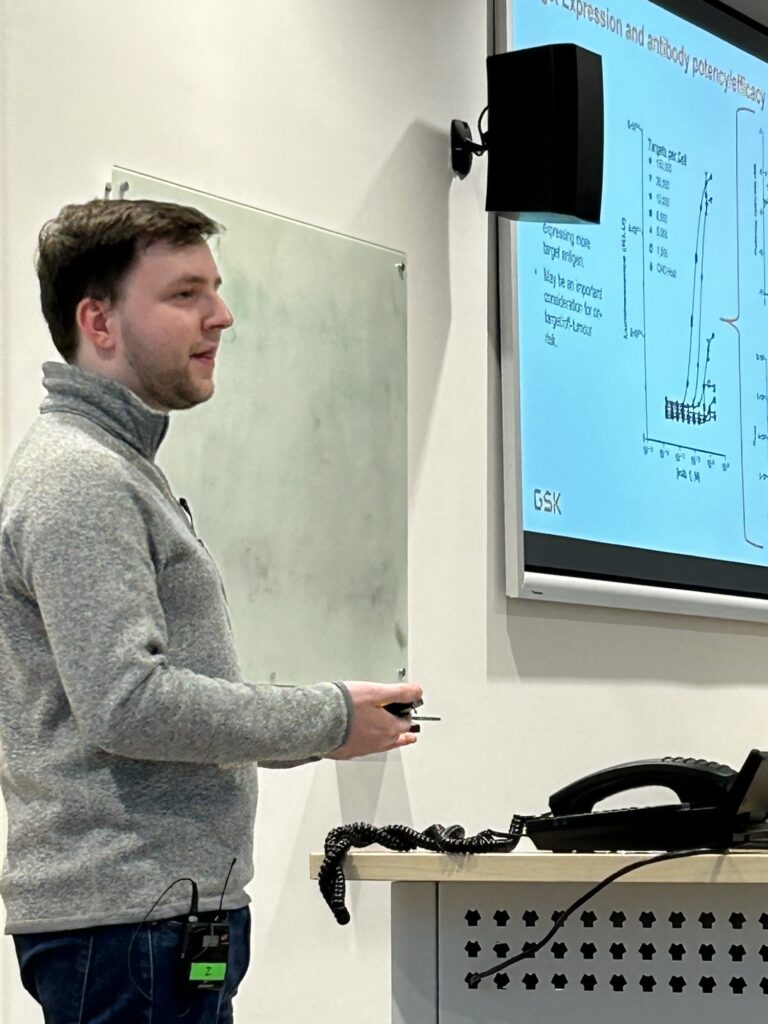
The final presenter, James Lodge, Senior Scientist at GSK, focused on high-throughput antibody-dependent cytotoxicity assays and FcgR engagement assays to enable function-first screening. Lodge discussed picking an antibody mechanism of action based on target biology and then dived in to discussing the traditional format of an antibody campaign at GSK. He highlighted their funnel, first involving screening the affinity of 500 antibodies, then triaging the top clones into cell binding assays and functional screenings, to then funnel down into a selection of antibodies for lower throughput assays. Subsequently however, he posed the question, what is the most physiologically relevant way to screen these antibodies? In self-response he relayed his intent for the rest of the presentation, “to deliver a function-first antibody discovery screening strategy, in which that 500-antibody screen typically done by SPR is replaced with a functional assay.”
Promega Technologies In Action:
Throughout the presentation multiple remarks and studies highlighted the use of Promega products, and their positive impacts on research.
During both Michel and Mighell’s discussions, they each explored the utilization of Promega’s NFAT Jurkat T-cell activation kit, emphasizing the importance of luminescent readout proportional to levels of T-cell activation in their research. Michel also went on to discuss utilization of the IL-2 Jurkat T cell activation kit from the same T-cell activation product line, and the E7 TCR/TCRαβ-KO cells that Grailer had discussed earlier. In addition, Michel went on to further discuss other cell lines utilized in the development of functional potency assays and he concluded the cell lines from Promega “make a good cornerstone of a GMP validated method.”
During the afternoon session Lalor extended a thank you to Promega for enabling her group to try some of the Lumit direct receptor binding assays, emphasizing that they do reflect what they have seen biologically with their liver research. Following this, Harradence discussed a multitude of cell lines and assays that were utilized throughout the different stages in a drug discovery process including the Promega RealTime-Glo Annexin V apoptosis and Necrosis Assay and CellTiter-Glo Assay. Harradence went on to state that “The CellTiter-Go system meets the requirements in terms of robustness, sensitivity, simplicity, accuracy and precision” when it comes to the third stage in the discovery process. Lodge, during his presentation, also discussed the CellTiter-Glo, his use of the ADCC Reporter Bioassays, and his considerations of using HiBiT.
Conclusion: Celebrating the Contributors to Our Event’s Success
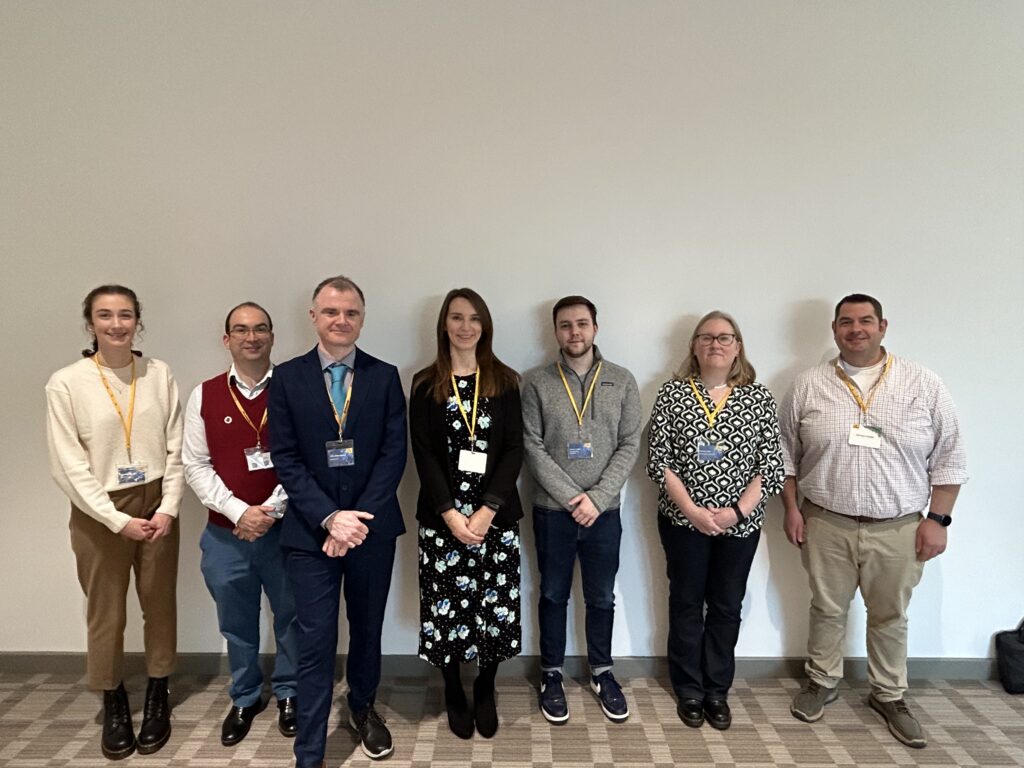
Promega extends its gratitude to all the speakers, event organizers, and attendees who contributed to the resounding success of the 7th Biologics Symposium. To our esteemed speakers, thank you for sharing your wealth of knowledge and diverse research – bringing the realm of biotherapeutics to life. Another special thank you to our audience for posing engaging questions and transforming a passive learning environment into an active dialogue.
Access Full 2023 Biologics Symposium Here!
Latest posts by Shannon Sindermann (see all)
- What 32,000 3D Spheroids Revealed About Culture Conditions - April 15, 2025
- Can Fungi Help Clean Up Environmental Contaminants? - March 20, 2025
- Reprogramming T Cells with DCA: A Metabolic Breakthrough - February 7, 2025
